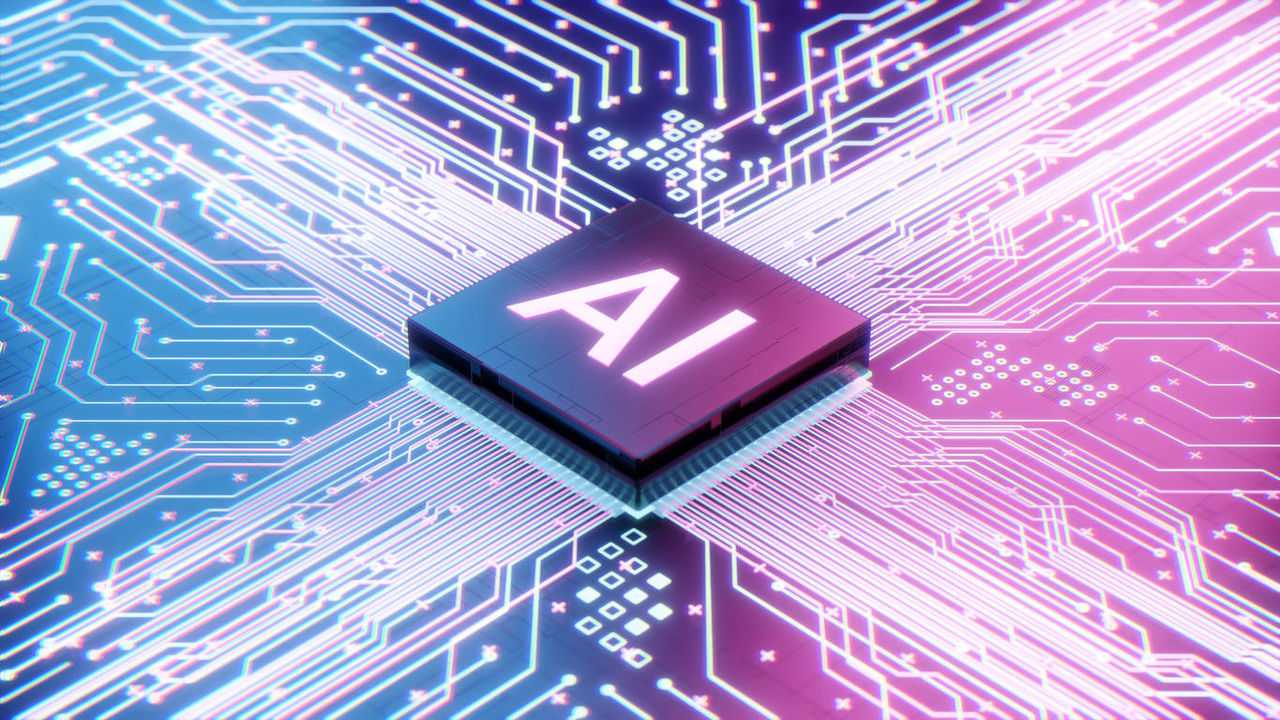The February 2024 EN:Insights Forum discussed new research from SHRM and The Burning Glass Institute on the impact of artificial intelligence on the workplace, the workforce and the overall economy. The session featured Burning Glass Institute Chief Economist Gad Levanon and SHRM Executive-in-Residence for AI + HI Nichol Bradford discussing how generative AI will impact HR and what executives should do next.
“The evolution of generative AI and large language models is one of the most important economic, labor market and business trends of the coming decade,” Levanon told forum attendees. “It’s important to understand that this is one important trend, but it's happening at the same time that other important trends are occurring, such as labor shortages.”
Here 6 key insights from Levanon's research presentation:
RESEARCH INSIGHT 1: AI will make workers much more productive, but productivity gains won’t be evenly distributed.
- High-paying roles may be the most affected, unlike in past waves of automation.
- The roles most affected by labor shortages are unlikely to be impacted by AI.
RESEARCH INSIGHT 2: Workers in research and development will experience high productivity gains, which will increase the overall pace of innovation. That will mean:
- Faster economic growth.
- Massive layoffs in some roles.
- Greater demand for roles in building and implementing AI models and tools.
- Significant needs for reskilling for displaced workers.
RESEARCH INSIGHT 3: An organization’s implementation speed is essential, as faster adoption will lead to a substantial competitive edge from greater AI-powered efficiencies and lower prices—and as a result, increased market share. The adoption of AI will lead the global economy through a seven-phase cycle:
- Productivity increases as AI improves worker efficiency.
- Talent demand lags as productivity gains accelerate.
- Layoffs occur as the oversupply of workers prompts downsizing.
- Profits increase as payroll costs decline.
- Prices decrease as competitive pressures drive down revenue.
- Demand rebounds when lower prices lead to more consumer spending.
- Hiring rebounds when increased demand prompts organizations to add workers.
RESEARCH INSIGHT 4: Changes will vary widely among jobs and industries. Sectors with many hands-on jobs, such as health care and construction, will see smaller impacts from AI. Jobs and organizations dealing with data, information and analysis, such as finance, publishing and legal services, will see big job losses as AI takes over functions related to research, writing and data collection.
Slightly affected industries:
- Transportation
- Construction
- Manufacturing
- Retail
- Hotels
- Restaurants
- Mining
- Entertainment
Somewhat affected industries:
- Advanced manufacturing
- Wholesale
- Education
- Health care
- Business and office support
- Government
Greatly affected industries:
- Publishing
- Finance
- Insurance
- Data processing/hosting
- Education
- Legal services
- Computer systems design
- Consulting services
- Travel services
RESEARCH INSIGHT 5: AI will help some industries cope with labor shortages, but not others.
Low labor shortage industries where AI will create a surplus of workers:
- Business and financial professionals
- Office and administrative support staff
- Web developers
- University professors
- Economists
- Writers, editors and journalists
Low labor shortage industries where AI will have little impact:
- Construction workers
- Some repair workers
- Some technicians
- Laundry and dry-cleaning workers
- Sewing machine operators
High labor shortage industries where AI will ease demand:
- Information security roles
- Speech-language pathologists
- Lawyers
- Actuaries
- Data scientists
High labor shortage industries where AI will have limited impact:
- Health care practitioners
- Health care support staff
- Skilled tradespeople
- Social workers
- Child care workers
RESEARCH INSIGHT 6: The adoption of AI will touch all aspects of HR. CHROs can expect to see changes in several crucial areas throughout their organizations.
- Talent: Recruiting will become easier, thanks to help from AI tools, but it will also be impacted by changes in demand for some roles.
- IE&D: HR must ensure job displacement doesn’t disparately impact underrepresented groups while ensuring new opportunities are accessible to diverse talent.
- Learning and development: Companies must reskill existing talent to fill AI-focused roles. Workers in eliminated positions could be retrained for other roles.
- Compensation: Salaries will adjust to labor market conditions.
Nichol Bradford: ‘We have to reinvent work and the workforce’
SHRM Executive-in-Residence for AI + HI Nichol Bradford joined the forum to answer questions and share her take on how AI will affect the workforce.
“Generative AI is changing everything,” said Bradford. “It's the biggest thing since the Industrial Revolution, even the agricultural revolution. And I believe it could be one of the very best things that happens to humanity.”
Insights from EN:Insights Forum Q&A with Nichol Bradford:
What are the biggest barriers to AI adoption that organizations must address?
Companies’ biggest challenge is deciding where to apply generative AI, as not all jobs or processes suit AI. Companies will try to automate some tasks before realizing they are best left to humans. This trial-and-error period could take a few years.
How should organizations approach the challenge of upskilling workers to use AI?
Organizations will need to create new jobs that require significant AI skills. Look at what existing jobs use similar skills and can fill those gaps with just a bit of training. One key will be skill-mapping every position in the organization to identify workers who can move to jobs that require new AI skills. Organizations also need “AI catalysts.” These people can educate, promote AI, get buy-in from others, understand the problems, tie it into the company's overall strategic direction, and build on that success to extend AI in other directions.
As an HR leader, how can we quickly get up to speed on AI?
Bring in people who can talk to the organization’s workers and demonstrate AI’s capabilities and how it works. Another step is simply allowing workers to get their hands on AI and experiment—safely—to learn how AI can be utilized. That kind of exposure can increase curiosity about AI and lead to the fluency required to make it work for the organization. Remember: Up to 44 percent of current tasks are subject to automation.
What steps should employers take to govern generative AI?
The first step is to allow and encourage the use of AI. Organizations that have banned the use of AI out of an abundance of caution haven’t banned it; they’ve just forced it underground in a way that can be dangerous. Creating policies that call for transparency and put safe limits on deploying AI, such as ensuring private data stays private, is crucial, especially at the start.
Bradford’s next steps for HR leaders include:
- Creating AI fluency. That means educating as many people in the organization as possible about what AI is and how it works, then getting AI into the hands of people who can safely try it out to discover how it can work for specific roles in the company. SHRM recently staged a one-day AI fluency event where everyone in the organization had a “play day” with AI all at once. To start, get workers involved in a competition to create the best image using generative AI. They’ll be wowed by AI’s capabilities.
- Moving fast but being patient: Lagging adopters will get left behind, so it’s vital to invite people into the process to identify opportunities to deploy AI. But remember that AI is rapidly developing, and each advance will lead to many others. It could take five to 10 years to fully realize AI’s benefits as the technology improves.
- Employing change management basics: All the efforts around using AI in your organization require trust, open communication, and transparency. Otherwise, workers will fear that AI is being deployed only to destroy their jobs. Use the lessons learned from previous implementations of new technology, from PCs to the Internet to social media and remote work.
Was this resource helpful?




